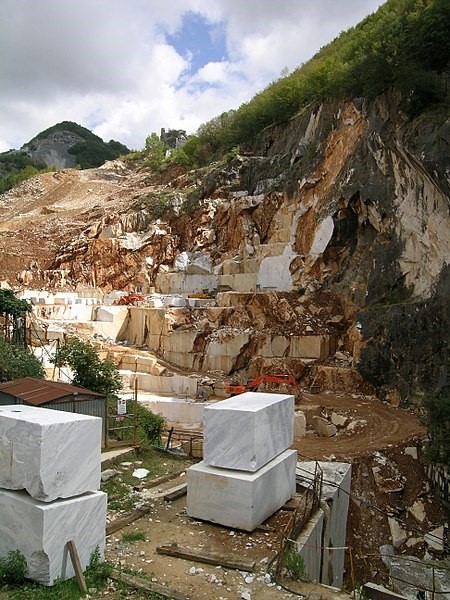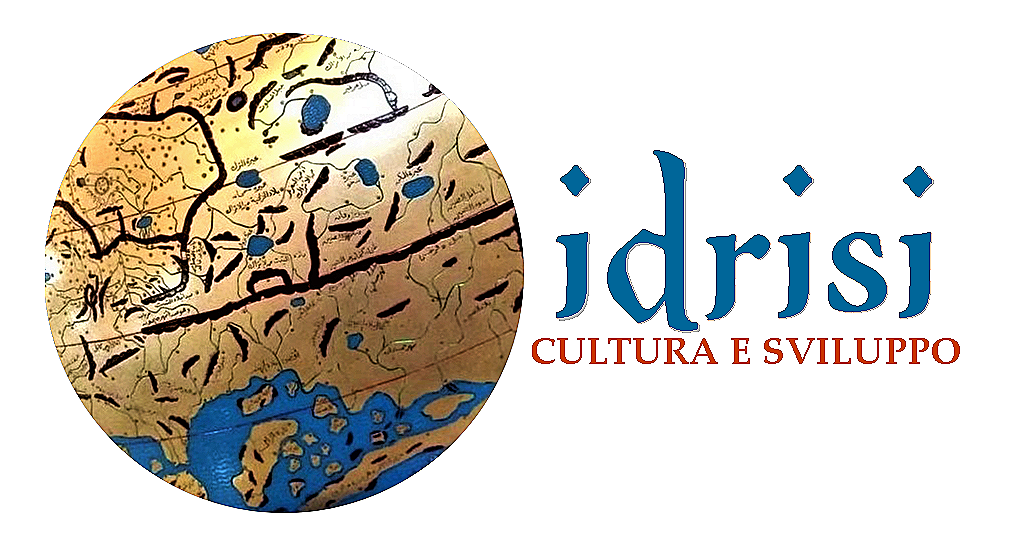Carrara Quarries
44º 3' 15'' N 10º 3' 38'' E
Carrara, Massa-Carrara, Tuscany
Italy
Description
Located in the Apuan Alps, Carrara Quarries are one of the most prestigious and finest marble quarries. This stone was called The White Gold by ancient populations. These quarries count with more than 300 mines.
White Carrara marble
Veined marble
Bardiglio marble
“Cloud”-like marble
“Arabesque”-like marble
Statuary marble/Veined statuary
Calacata marble
Extracted Materials
White Carrara marble
Veined marble
Bardiglio marble
“Cloud”-like marble
“Arabesque”-like marble
Statuary marble/Veined statuary
Calacata marble
Antropological info
There are many monuments all around the world made of this rich marble: The Greek Pantheon, Trajan’s Forum, The Temple of Jupiter, The Temple of Apollo Platinus, Santa Maria di Fiore, The Baptistery in Florence, Pisa’s Cathedral and Baptistery. Michelangelo’s David and Pietà was also made of Carrara’s Marble. He chose personally the marble blocks he wanted to use in his sculptures.
These quarries worked mainly for foreign interest, as this Luni marble was one of the most famous in the world. Famous sculptors and architects, such as Nicola Pisano and Michelangelo, were delighted by the
Its mining origins date back to 155 b.C., when the first monument made out of Polvaccio’s Marble was made: a gravestone dedicated to Marco Marcello, the Italian consul.
The Marble extraction and production has been through numerous changes. Nowadays, these quarries have introduced technology to its exploitations process, reducing the potential risk for workers.
The black yeast is one of the few life forms that can live on Carrara’s quarry. This fungus can produce acids from glucose, as we can see in Dionysus Theatre in Athens.
richness of the fine marble
These quarries worked mainly for foreign interest, as this Luni marble was one of the most famous in the world. Famous sculptors and architects, such as Nicola Pisano and Michelangelo, were delighted by the richness of Carrara’s Marble.
Sociologal info
Carrara has been the centre of many anarchist movements in Italy, especially among quarry workers. In 1894, anarchist quarry workers went on strike in support of peasants right. This movement, known as Linigiana Revolt was violently supressed by the government. One of the most beloved anarchist figures in Italy was Alberto Meschi has his own commemorative monument in Piazza Gramsci.
In 1894, The New York Times published an article about the neglection in the marble quarries in Italy. The workers were mainly fugitives or ex-convicts, as the only requirement was the strength and endurance.
Archaeological info
Its mining origins date back to 155 b.C., when the first monument made out of Polvaccio’s Marble was made: a gravestone dedicated to Marco Marcello, the Italian consul.
The Marble extraction and production has been through numerous changes. Nowadays, these quarries have introduced technology to its exploitations process, reducing the potential risk for workers.
The black yeast is one of the few life forms that can live on Carrara’s quarry. This fungus can produce acids from glucose, as we can see in Dionysus Theatre in Athens.
Sustainable tourism insights
Carrara´s quarries are an emblematic touristic destination in this city. There are lots of different touristic options for visiting these mines, such as guided tours or jeep rides. The majestic views and the gTechnology advance has completely changed the production and transportation of marble, making marble exploitation safer for workers.reatness of marble has left many visitors speechless.
The group Cave Michelangelo, led by Franco Barattini and Sons, promotes Carrara and its marble quarries as a site of cultural interest.
Its sculpture workshop is specialized on in marble and classic statues reproduction, as well as contemporary art. Famous pieces have been created here, like Paul McCarthy, Maurizio Cattelan, Gio 'Pomodoro, Frank Breidenbruch, Anna Chromy, Emanuele Giannetti, Dani Karavan, Hilde Van Sumere or Jan Fabre sculptures. Cave Michelangelo has brought back the artistic international movement back to Carrara
Environment sustainability
Technology advance has completely changed the production and transportation of marble, making marble exploitation safer for workers.
Creativity insights/curiosities
Carrara and its quarries have been the recording location of many famous films and documentaries, such as:
- 007 Quantum of Solace, by Marc Forster
- Train sortant d’un tunnel by Lumière brothers
- Michelangelo Infinito by Emanuele Imbucci
- Il Capo – The Chief by Yuri Ancarani
- Made in Italy by Fabio Wuytack
-2 December by Pier Paolo Pasolini









